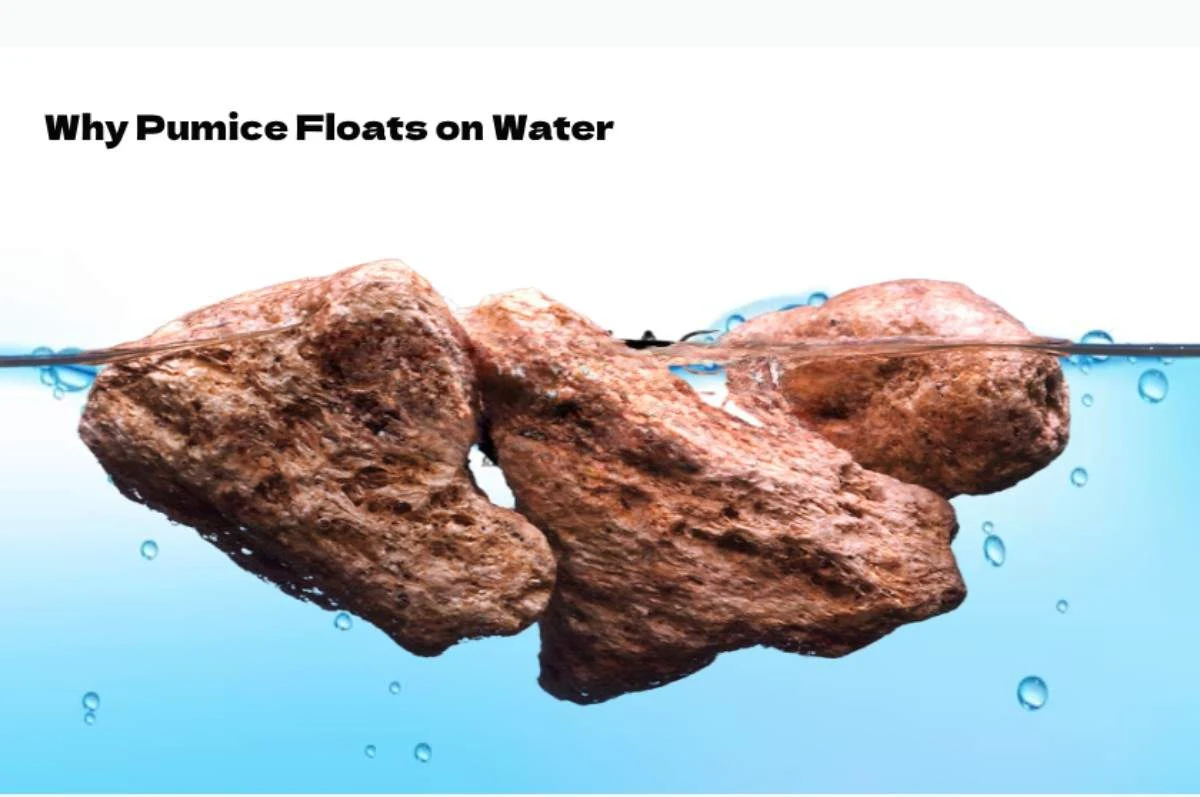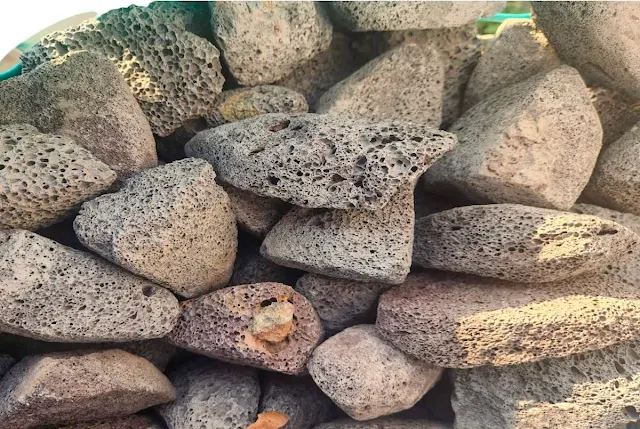Why Pumice Floats on Water
Pumice floats on water because it has a very low density, meaning it is less dense than water. This low density is thanks to the unique way pumice is formed:
Volcanic origin: Pumice forms when gas-filled lava cools and hardens rapidly. This rapid cooling traps air bubbles inside the solidifying rock, creating a sponge-like structure with many air pockets.
Air-filled pores: These air pockets make up a large portion of the pumice's volume, reducing its overall density significantly. Imagine a big, fluffy marshmallow compared to a solid rock – the marshmallow, with its air pockets, will be much less dense and therefore float.
Density comparison: Pumice typically has a density of around 0.3-0.9 g/cm³, while water has a density of 1 g/cm³. This means pumice is 2-3 times less dense than water, allowing it to displace more water than its own weight and consequently float.
The key factors
Low density: Air-filled pores significantly reduce pumice's density.
Displacement principle: Pumice displaces more water than its own weight due to its lower density.
Buoyancy: The upward force exerted by the displaced water allows the pumice to float.
While the air pockets are crucial for buoyancy, it's important to note that over time, water can slowly seep into the pores, which can eventually increase the pumice's density and cause it to sink. However, this process can take a long time depending on the size and composition of the pumice.
Facts about pumice floating
Variations in buoyancy: The amount of air trapped within pumice can vary, affecting its buoyancy. A pumice stone with more air pockets will float higher than one with fewer.
Water absorption: Despite its porosity, pumice doesn't readily absorb water. This is because the air pockets are tiny and interconnected, preventing water from filling them completely. However, if pumice is submerged for a long time, it can eventually absorb some water, reducing its buoyancy and potentially causing it to sink.
Importance in nature: Pumice's ability to float allows it to travel long distances across oceans, carrying seeds and other organisms to new locations, contributing to the spread of life.
The trapped air in pumice also contributes to its abrasive texture, making it a popular material for exfoliating skin and cleaning surfaces.
Conclusion
The combination of low density, vesicular porosity, and a closed-cell structure collectively contribute to the remarkable buoyancy of pumice on water surfaces. This property has practical implications, as floating pumice can be transported across oceans by ocean currents, and it plays a role in geological processes, such as the dispersal of volcanic ejecta and the formation of new land.



%20(1).webp)






